Introduction
The first time I went to the shrine was on a snowy day in January 2014. It was also the first time I saw snow. The view of Meiji Shrine covered with white snow was breath-taking. I can never forget the experience. Nestled amidst the bustling heart of Tokyo, the Meiji Shrine stands as a symbol of harmony between tradition and modernity, offering a serene sanctuary that provides respite from the urban chaos that envelopes the city. In this article, we embark on a journey to unravel the captivating allure of the Meiji Shrine, one of the famous Japanese temples, explore its profound historical significance, and immerse ourselves in the tranquil experiences it extends to both locals and globetrotters.
This article includes affiliate links that do not incur additional charges for you. I may receive a modest commission if you click on them and make a purchase.
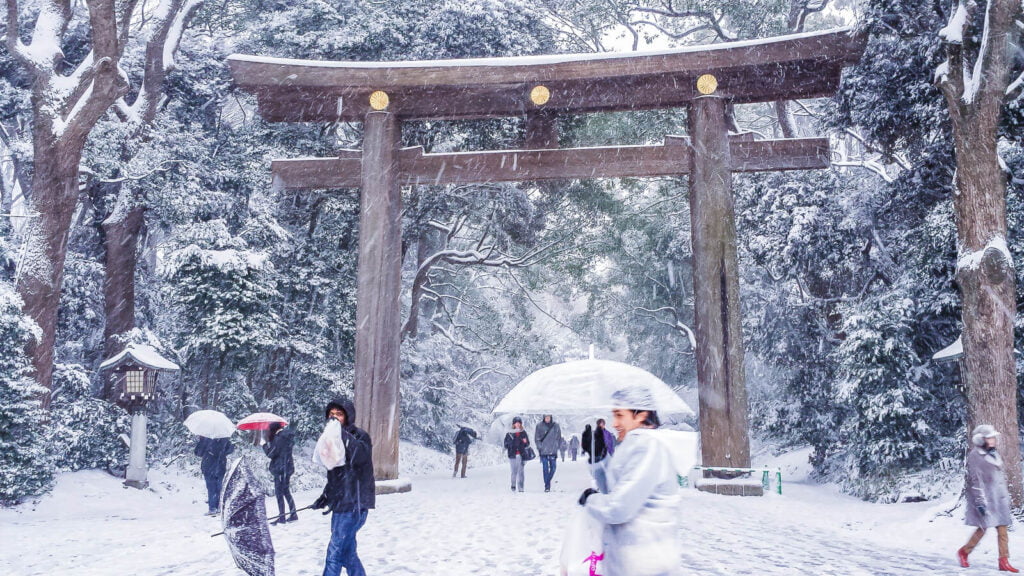
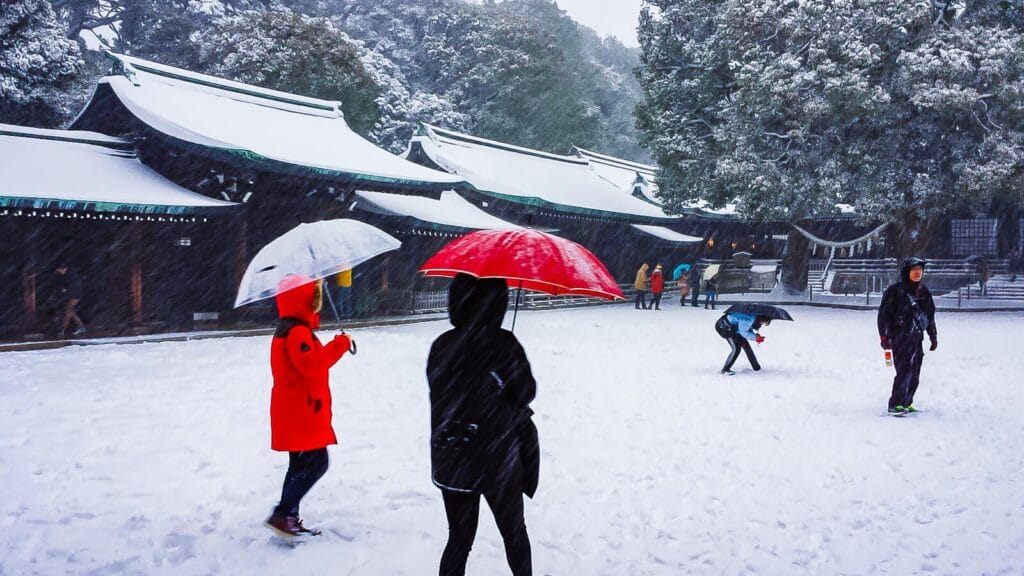
















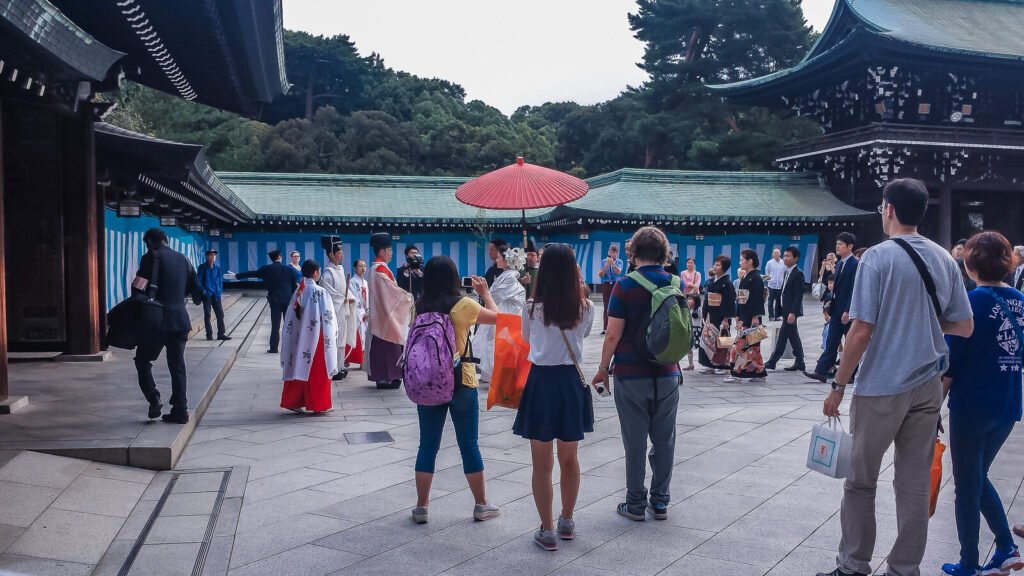
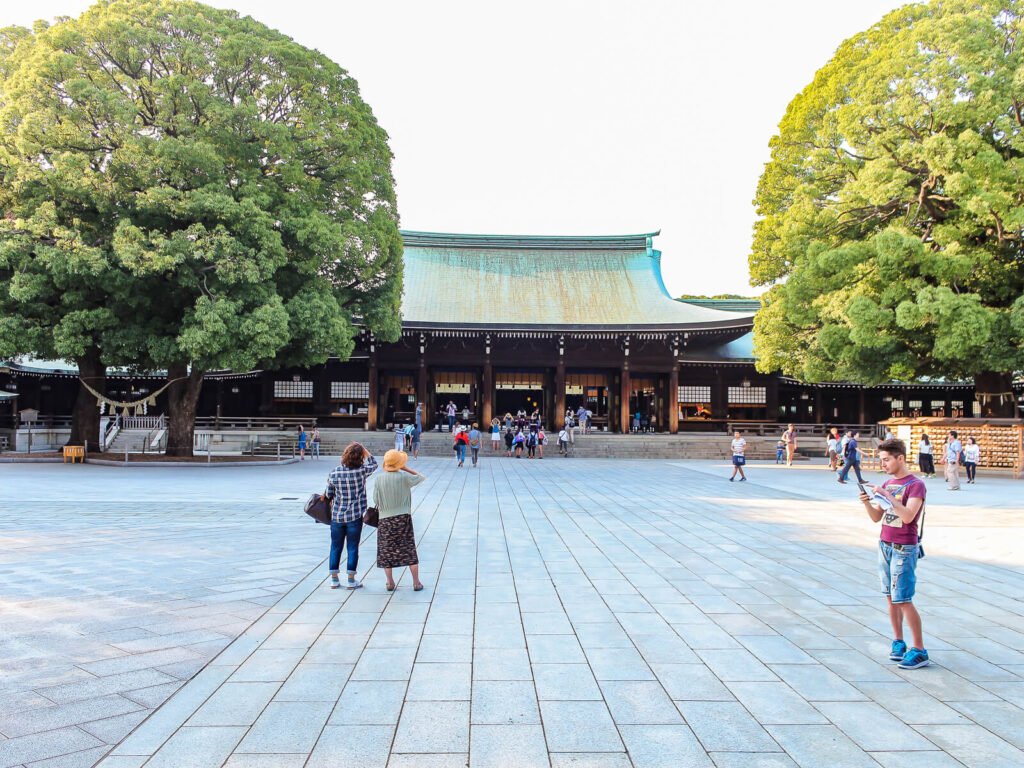
Discovering Japanese TeMPLES: A Glimpse into Tokyo’s Soul
The Legacy of Emperor Meiji and Empress Shoken
The Meiji Shrine stands as a tribute to Emperor Meiji and Empress Shoken, whose reign marked a transformative era in Japanese history. Their commitment to modernization while preserving traditional values makes the shrine an embodiment of their vision.
A Gateway to Japanese Spirituality
Within Tokyo’s skyscrapers and neon lights, the Meiji Shrine serves as a spiritual haven that beckons visitors to connect with Japan’s ancient religious traditions. It’s a place where the soul can find solace amidst the chaos.
Meiji Shrine’s Role in Tokyo’s Urban Tapestry
The Meiji Shrine isn’t just a historical site—it’s an integral part of Tokyo’s identity. Its presence amid the city’s modern landscape serves as a reminder of Japan’s rich heritage and the continuous dialogue between the past and the present.
Tranquility in Nature: The Enchanted Forest
The Grand Torii: A Symbolic Entryway

The journey to serenity begins with the grand torii gate—a symbolic entryway that marks the transition from the secular to the sacred. Passing through it, visitors enter a realm where time seems to slow down.
The Mystical Allure of the Torii Gate: A Gateway to Japanese Culture
Walking the Path of Cryptomeria Trees
The path leading to the shrine’s main buildings is lined with majestic cryptomeria trees, creating a natural canopy that shields visitors from the city’s noise and distractions. The rustling leaves and filtered sunlight evoke a sense of calm.
The Sanctuary of Inner Gardens
Within the shrine’s grounds lie inner gardens that further enhance the tranquility. Ponds, bridges, and meticulously landscaped greenery offer spaces for contemplation, encouraging visitors to pause and connect with nature.
Cultural Traditions and Spiritual Practices
Rituals and Prayers at the Main Hall

At the heart of the Meiji Shrine stands the main hall, where rituals and prayers are conducted. Visitors can participate in traditional practices, such as offering prayers for health, success, and happiness, immersing themselves in Japan’s spiritual customs.
Omotesando Avenue: A Lined Path of Blessings
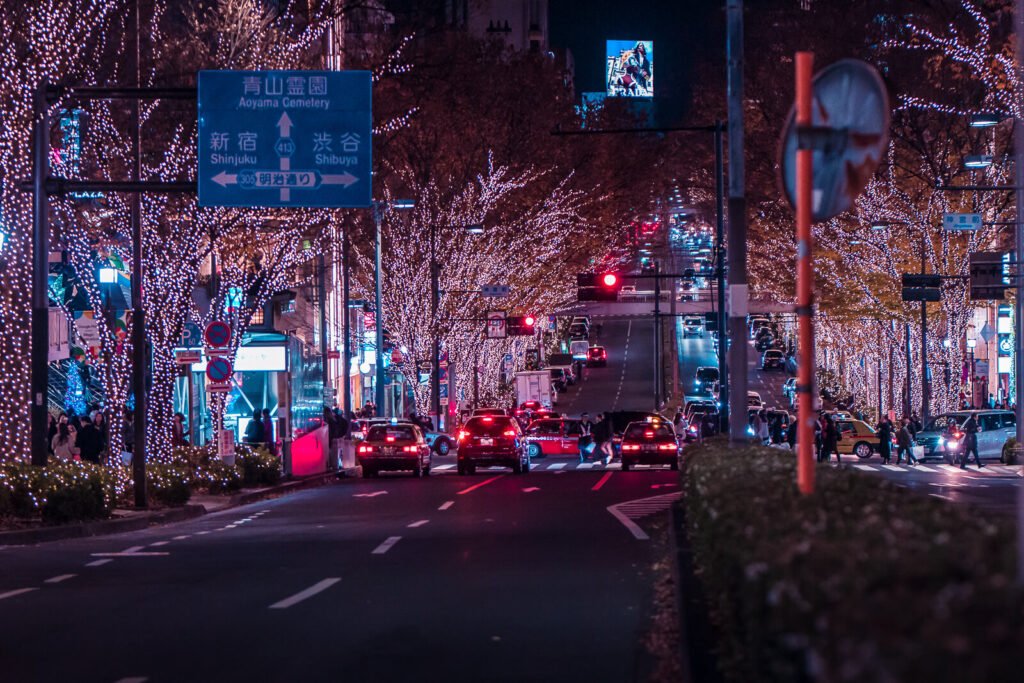
The avenue leading to the shrine, known as Omotesando, is lined with sake barrels and wine casks, gifts from across Japan. These symbolic offerings represent the nation’s well-wishes and create an avenue of blessings for visitors.
Embracing the Spirit of Japanese Festivals
The Meiji Shrine comes alive during traditional festivals, providing a glimpse into Japan’s vibrant cultural celebrations. Festivals like Hatsumode (New Year’s visit) and Shichi-Go-San (Children’s Day) offer insights into the country’s customs and rituals.
Visitor Experience: Embracing Serenity
Moments of Reflection and Stillness
Walking through the Meiji Shrine’s grounds offers moments of reflection and stillness. The absence of bustling city sounds is replaced by the rustling leaves, creating an atmosphere conducive to meditation and inner peace.

Witnessing Traditional Weddings

Visitors might have the privilege of witnessing a traditional Shinto wedding at the shrine. The ceremonies, marked by elaborate rituals and ornate costumes, provide a glimpse into the sanctity of marriage in Japanese culture.
Capturing the Essence of Meiji Shrine
For photographers and enthusiasts, the Meiji Shrine offers a plethora of visual treasures. From the intricate architecture to the play of light on the shrine’s structures, there are endless opportunities to capture its timeless beauty.
Balancing Past and Present: Meiji Shrine’s Legacy
Nurturing Cultural Heritage in the Modern Age
As Tokyo evolves, the Meiji Shrine remains steadfast in its commitment to nurturing cultural heritage. Its role as a sanctuary of tradition in the midst of modernity ensures that the essence of Japan’s spiritual heritage is preserved.
Ensuring Preservation for Future Generations
The shrine’s custodians understand the importance of passing down the legacy to future generations. Efforts to maintain the shrine’s structures, rituals, and teachings ensure that its significance endures over time.
Inviting All to Discover Meiji Shrine’s Tranquility
The Meiji Shrine extends an open invitation to all who seek tranquility and spiritual connection. Whether it’s to offer a prayer, witness a ritual, or simply find a moment of calm, the shrine welcomes visitors from all walks of life.
Address
1-1 Yoyogi Kamizonocho, Shibuya-ku, 151-8557, Japan
Opening Hours
Meiji Jingu is open every day of the year, free of charge, from sunrise to sunset.
Website
Access
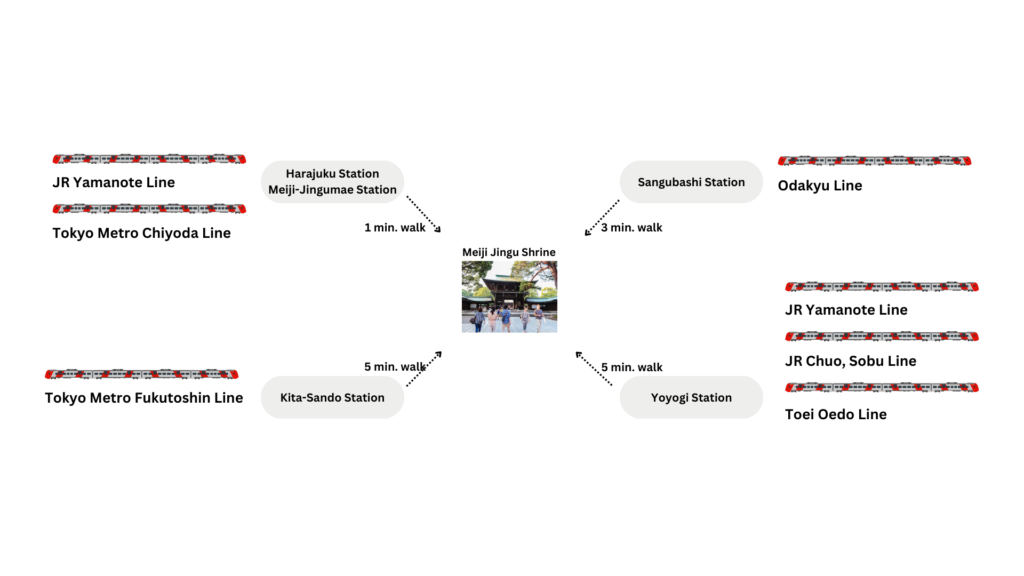
Conclusion
The Meiji Shrine is more than a religious site—it’s a refuge for the soul in the heart of Tokyo’s urban landscape. Amidst the chaos of the city, the shrine’s serene ambiance and spiritual resonance offer a reminder of the power of tranquility and the enduring beauty of tradition.
More from Airashi Japan
Navigating Tokyo Transportation efficiently
Tokyo Shibuya Crossing: The World’s Busiest Intersection
Exploring Tokyo: Unveiling Top Attractions and Hidden Gems
Tokyo Shibuya Crossing: The World’s Busiest Intersection
Kichijoji: Unveiling the Charm of Tokyo’s Hidden Gem
Yanaka: Old-World Charm and Quaint Streets
The Mystical Allure of the Torii Gate: A Gateway to Japanese Culture
What is Meiji Jingu shrine known for?
Meiji Jingu Shrine is known for the following:
Dedication to Emperor Meiji and Empress Shoken: The shrine is dedicated to the deified spirits of Emperor Meiji and his wife, Empress Shoken, who played pivotal roles in modernizing Japan. The shrine serves as a place of reverence for their spirits [Meiji Shrine].
Location Amidst Nature: Situated in the heart of Tokyo, Meiji Jingu is set within a lush green forest covering 70 hectares. It provides a serene and natural escape from the bustling city, making it a peaceful and picturesque shrine [About Meiji Jingu].
Symbolic Spiritual Spots: Within the shrine, you can find symbolic spiritual spots like Kiyomasa’s Well, offering a deeper spiritual connection and a sense of tranquility.
Historical Significance: Meiji Shrine was completed in 1920 and holds a prominent place in Japanese history. It’s a significant Shinto shrine that attracts both locals and tourists, making it one of the most famous shrines in Japan [2].
Where is the Meiji Shrine located?
1-1 Yoyogi Kamizonocho, Shibuya-ku, 151-8557, Japan
How to get to Meiji Shrine from Harajuku station
Meiji Jingu Shrine is just 1 minute walking distance from Harajuku station. Just a reminder that the shrine has many gates. After getting out of Harajuku station go to the right and follow the signs for Meiji Shrine.
Is Meiji Shrine worth visiting?
Many visitors discover it to be a meaningful and serene experience, making it a recommended addition to Tokyo itineraries.
How much does it cost to visit Meiji Shrine?
Admission to the shrine grounds is free. It costs 500 yen to access the iris garden and 1000 yen to enter the Treasure House and Treasure Museum Annex (Bunkakan).
What do people do at Meiji Shrine?
Visitors to Meiji Shrine in Tokyo engage in various activities, including:
1. People come to the shrine to offer prayers, make wishes, and seek blessings. They often participate in Shinto rituals and ceremonies, such as making offerings and bowing in respect to the spirits of Emperor Meiji and Empress Shoken.
2. Meiji Shrine features a beautiful Inner Garden known as Meiji Jingu Gyoen. Visitors can explore this garden, known for its seasonal beauty and traditional Japanese landscaping.
3. The shrine hosts valuable exhibitions that provide insight into the life and contributions of Emperor Meiji and Empress Shoken. This allows visitors to learn about Japanese history and culture.
4. During the New Year, Meiji Shrine welcomes millions of visitors for Hatsumode, the first shrine visit of the year. It’s a significant cultural tradition in Japan.
Can you wear shorts to Meiji Shrine?
When visiting Meiji Shrine in Japan, it is recommended to dress conservatively and modestly to show respect for the sacred site. While there is no strict dress code, wearing shorts, tank tops, and short skirts is generally discouraged. It’s advised to opt for clothing that covers more skin and is both comfortable and conservative. Because Meiji Shrine is nestled in a natural setting, which includes insects, it is advisable to avoid exposing too much skin.
How long should I spend at Meiji Shrine?
Around 1 to 2 hours are sufficient for the visit, depending on how much you want to cover. Visiting the shrine and museum will take more time than visiting only the shrine.
Can you eat in Meiji Shrine?
Eating is allowed only in the designated areas.
Can I take photos in the shrine?
Yes, photos are allowed. Nevertheless, it’s important to be aware that taking photos is not allowed in the vicinity of the main shrine, where individuals are engaged in prayer. Additionally, kindly avoid capturing images of the amulet office.
How do you pray at Meiji shrine?
To pray at Meiji Shrine, follow these steps:
Approach the Shrine: Walk up to the shrine’s main hall, making sure to walk on the sides of the path as the center is reserved for the deities.
Cleansing Ritual: At the purification fountain near the entrance, take the ladle provided and wash your hands and mouth to purify yourself.
Bow: As a sign of respect, bow deeply once before proceeding.
Make an Offering: At the main hall, you can make an offering, usually in the form of money, by placing it in the offering box. It’s customary to throw a coin into the box.
Clap Twice: Clap your hands together twice to get the attention of the deities.
Silent Prayer: After clapping, put your hands together in front of your chest and say your prayer in silence. You can make your wishes or give thanks at this time.
Bow Again: Finally, bow deeply once more to show your respect.
Ema (Optional): If you have a specific wish, you can purchase an ema (wooden votive tablet) at the shrine, write your wish on it, and hang it on a designated board.
Remember to be respectful and quiet during your visit. Meiji Shrine is a place of serenity and reflection.
Can I wear jeans to Japanese shrines?
You can wear jeans to Japanese shrines, as there isn’t a strict dress code for visiting these places. However, it’s advisable to follow a “smart casual” dress code, which means wearing something comfortable but conservative when visiting shrines and temples in Japan.
Why are shrines red in Japan?
Shrines in Japan are often red for several cultural and symbolic reasons:
Warding off Evil Spirits: The red color is believed to have the power to reject evil spirits and protect against danger. It is thought to keep bad luck at bay, making it an ideal choice for religious structures where protection is paramount.
Spiritual Significance: Red, or vermilion, has deep spiritual significance in Japan. It is used to represent vitality and energy. In the context of shrines, it symbolizes the spiritual vitality and energy of the deities enshrined within.
Inari Shrines: Red is particularly associated with Inari Shrines, which enshrine the deity of harvest. In these shrines, the use of red is related to the wish for a bountiful harvest and prosperity.
Warding Off Bad Luck: Red is also believed to reject bad luck, which is important in the context of shrines where people go to seek blessings and protection from misfortune.
Cultural Tradition: The use of red in shrines dates back to ancient times and is deeply rooted in Japanese culture. It’s not only symbolic but also a reflection of tradition and heritage.

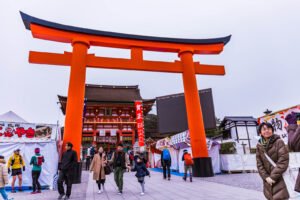
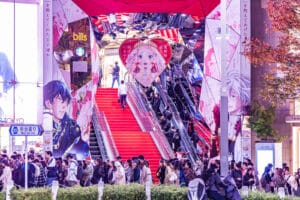

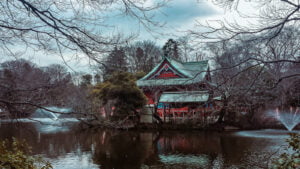
Pingback: Exploring Tokyo: Unveiling Top Attractions and Hidden Gems - airashijapan.com
Pingback: Exploring the Heart of Tokyo: Shinjuku - airashijapan.com
Pingback: Omoide Yokocho: Tokyo’s Nostalgic Alley of Memories - airashijapan.com
Pingback: Exploring Kagurazaka: A Tapestry of Tradition and Modernity in Tokyo - airashijapan.com
Pingback: Harajuku Japan: A Trendsetter’s Haven - airashijapan.com
Pingback: Navigating Tokyo Transportation efficiently - airashijapan.com
Pingback: Best Places to See Autumn Foliage in Tokyo - airashijapan.com
Pingback: Recommended Reading for Your Journey to Japan - airashijapan.com
Pingback: Best Japan Travel Apps - airashijapan.com
Pingback: Spring in Tokyo: Sakura Dreams at Shinjuku Gyoen - airashijapan.com
Pingback: Akihabara Electric Town : Tech and Anime Haven - airashijapan.com
Pingback: Yanaka: Old-World Charm and Quaint Streets - airashijapan.com
Pingback: The Mystical Allure of the Torii Gate: A Gateway to Japanese Culture - airashijapan.com
Pingback: Harajuku St: Where Tokyo Street Photography Comes Alive - airashijapan.com
Pingback: Tokyo Autumn 2024: The Ultimate Guide to Experiencing Fall in Japan’s Capital - airashijapan.com